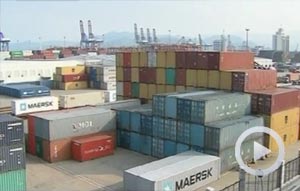Techs and the city: IT firms see challenges in China's urbanization
Updated: 2013-07-08 07:42
By Cecily Liu (China Daily)
|
||||||||
Smart traffic system from IBM helps manage urban congestion
Western technology companies are keenly carrying out research and development on smart-city solutions to address China's unique challenges arising from rapid urbanization.
The success of these IT solutions in China's cities is also helping them break into other emerging markets across the world.
One example is a smart traffic management system developed by IBM Corp in China, whereby buses change routes according to local traffic conditions.
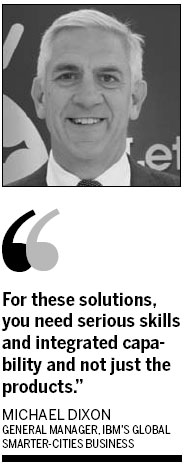
"Traffic congestion is a major problem in China," says Fu Peihong, an executive with IBM's China smarter-cities program. "We are currently trialing this solution in a few Chinese cities, and in the future we may be able to bring the same solutions to many rapidly urbanizing emerging countries that are dealing with the same traffic challenges."
Fu says another solution first developed in China was to introduce a comprehensive information platform for Zhoushan port in Zhejiang province.
Zhoushan went from handling 100 million tons of cargo in 2006 to 300 million tons in 2012, which put enormous strain on the port's loading and unloading operations.
IBM is now helping the port develop a system that shares information between the local government and private companies. For example, ships can quickly determine the best location to dock, and help to minimize congestion and save fuel.
"R&D is very important to IBM's smarter city work in China, and as a global organization we make sure the results of our R&D work in China are shared with our colleagues around the world," Fu says.
Schneider Electric SA is another major company developing smart-city solutions for China's urbanization challenges.
"A lot of our smart-city solutions now applied to emerging markets were originally developed in China," says Yin Zheng, senior vice-president of Schneider Electric in China. "These include solutions that improve the energy efficiency of buildings, the application of smart grids, and provide security for high-density urban areas."
During the 2010 Shanghai Expo, Schneider provided more than 12,000 surveillance cameras to the city, which received more than 70 million visitors over the six-month exhibition.
The term "smart city" originated in the 1990s to signify how urban development was turning toward technology and innovation, although more recently it is being used to address the strong concern for sustainability and improving quality of urbanization.
China has expressed strong support for smart cities, with the government forecasting that 600 to 800 smart-city projects will be carried out during its 12th Five-Year Plan (2011-2015).
The Ministry of Housing and Urban-Rural Development has selected 90 cities for the projects. It also confirmed in April that a credit line of at least 440 billion yuan ($70.3 billion) has been set aside by banks and investors for the projects.
Eric Woods, a director of market research and consulting firm Navigant Research, says China has a greater ability to finance smart-city projects than Western countries, and this creates opportunities for R&D. New solutions have been particularly strong in traffic management, water and energy infrastructure, and energy-efficient buildings, he says.
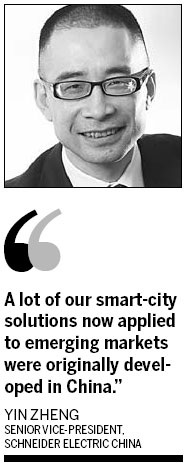
"China plays a very prominent role in terms of smart-city development, not just because of the speed of its urbanization but also the consequences of economic growth," he adds.
"I think people are starting to see China as the center of innovation for urban policies that deal with the common challenges of urban infrastructure requirements."
Smart-city solutions have also gained popularity in the West, although many focus on maintaining the competitiveness of old city centers and meeting energy reduction goals.
In Europe, smart-city development is an important part of Horizon 2020, a European Union initiative that aims to secure Europe's global competitiveness.
Nikolaos Kontinakis, project coordinator of Eurocities, a network that supports local governments, says European cities have a lot to learn from Chinese ones in terms of smart-city solutions.
"European cities are old cities but can solve new problems, and Chinese cities have the ability to build innovative solutions from scratch. So we see the conversation as a two-way street," says Kontinakis.
Yin says the difference between Western and Chinese cities often means foreign companies have to adjust their solutions and business models when bringing their technologies to China, and learn new lessons in the process.
"One challenge of application is to find appropriate business models," he says. "For example, we need to consider how to best work with the government and investors, how to set an appropriate price for our services, and who is to enjoy and benefit from our services."
Schneider Electric is currently working with the Development Research Center of China's State Council to explore how different funding models can be applied to China's smart-city projects.
He says Western examples of funding models that could work in China include public-private partnerships, where private parties invest in public infrastructure projects, and performance-based funding, where funding decisions are based on results from target deadlines.
Yin says matching appropriate solutions across China's diverse range of cities proves a further challenge. Shanghai, for instance, needs to improve the energy efficiency of many old buildings through retrofitting processes, whereas other cities are mostly dealing with new buildings.
Also some areas face having to waste wind and solar energy production because it cannot be used locally or redistributed through power grids.
Schneider Electric is currently working with China Southern Power Grid Company in Guangxi Zhuang autonomous region and Guizhou province on minimizing energy waste.
However, despite China's immense potential for developing smart-city solutions, the country has still to fully grasp the importance of the technology, says Michael Dixon, general manager for IBM's global smarter-cities business.
"There is still a strong sentiment in China that you just have to buy the pieces and fix the problems," he says. "But instead, it is important to focus on the skills overall and the application of technology."
He says this is especially important for areas where the integration of social systems and technology is required, and that the leaders of the organizations involved understand the technology and order it, rather than leaving it to IT staff.
"For example, heads of hospitals may want to change the way hospital beds are allocated over time, or change it so the length of patient stay is reduced. For these solutions, you need serious skills and integrated capability and not just the products," Dixon says.
"We think China is just getting to the stage where some cities are beginning to understand why this is important."
Susanna Ma contributed to this story.
cecily.liu@chinadaily.com.cn
(China Daily 07/08/2013 page17)

 Mourn for students in San Francisco air crash
Mourn for students in San Francisco air crash
 Rolling stone finally settles
Rolling stone finally settles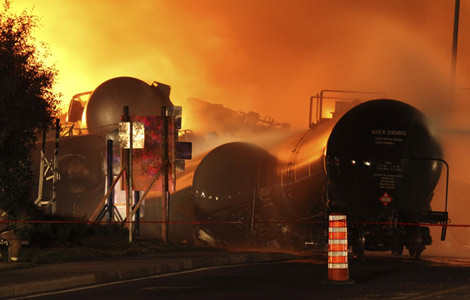
 Quebec disaster death toll jumps to 13
Quebec disaster death toll jumps to 13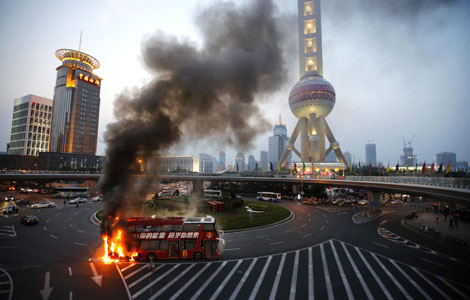
 Double-decker bus caught fire in Shanghai
Double-decker bus caught fire in Shanghai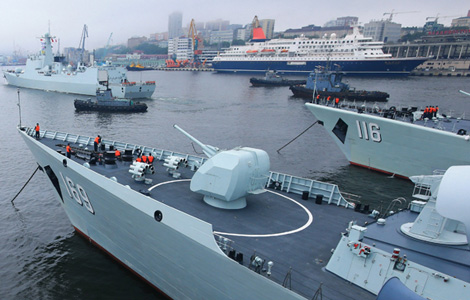
 China, Russia begin live-fire navy drill
China, Russia begin live-fire navy drill
 Grape expectations for Xinjiang county
Grape expectations for Xinjiang county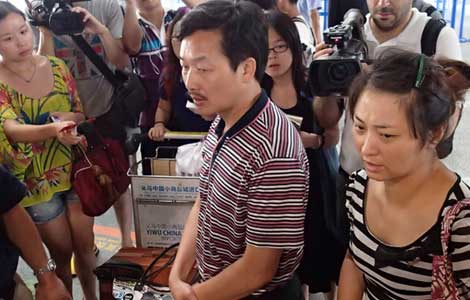
 Air crash victims' parents leave for US
Air crash victims' parents leave for US
 Victim's family mourn loss
Victim's family mourn loss
Most Viewed
Editor's Picks

|

|

|

|

|

|
Today's Top News
Air crash victims' parents leave for US
Terror law called for after attack
More Chinese firms investing in US
Subsidies aid poor families
Ex-rail chief sentenced
13 dead in Quebec train disaster
Premier Li lauds Guangxi's potential
Zhuhai's draft to establish new models
US Weekly

|

|

